Decades of deep domain expertise
Mark Evans has over 20 years’ experience in medical imaging with companies that include CTI Molecular Imaging, Siemens Healthcare, Mirada Medical and Cydar Medical, and as a result has exposure to the use of Machine Learning in medical imaging applications.
Mark is an inventor on 14 patent families and a former VP within Siemens Healthcare.
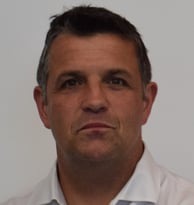



Dr Gil Travish PhD was an academic researcher in photonics (UCLA, Lawrence Berkeley National Laboratory, Argonne National Laboratory) for over 20 years, is an expert of field emission, an inventor on over 27 patent families, and the person who created the first generation FPA and has defined the pathway to deliver the second generation FPA.
Gil's world-leading expertise in field emission is complemented by deep experience in early-stage technology and product development. Gil has a longstanding affiliation with the University of Liverpool and the Cockcroft Institute.
Gil was awarded the 2023 American Physical Society (APS) Fellowship in 2023 for, "For contributions to the development of advanced accelerators, radiation production from charged particle beams, and for translating this research into applications in medical imaging and 3D tomosynthesis X-ray sources."
Brian Hilgers has almost 40 years' experience in creating successful third party alliances and indirect sales channels, and leading direct and indirect sales/service levels for major OEM medical organizations across the United States.
Brian has held VP level positions in North America in companies including Siemens, Hologic, Agfa, Toshiba and Adaptix.


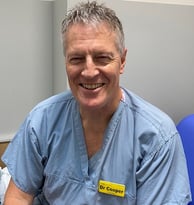

Dr Jonathan Cooper is a medical doctor (critical care consultant) who championed and facilitated the first cadaveric trials of the Adaptix system that enabled it to gain regulatory clearance. Jonathan is committed to bringing 3D imaging to the ICU so that it can better inform patient care.

Mark & Gil were the founders of Adaptix Limited, the company that produced the first generation FPA.
/ OUR STORY
Mark and Gil started from a technology 'pivot' and a blank sheet of paper, and took the company through ISO 13485 certification to first FDA filing of a system based on the technology, and in the process raised £20m of investment and grew a team of 70+ people. Between Gil and Mark, they were the inventors of over 70% of the 28 patent families pertaining to the first generation FPA and DT applications.
They achieved regulatory clearance for human applications and first sales of novel systems in security (funded by the Defence and Security Accelerator), veterinary and Non-Destructive Evaluation applications, along with novel uses of DT for Quality Control in composite and Metal Additive Manufacture components for the aerospace industry through securing a grant from the Aerospace Technology Institute (ATI).
They defined the pathway from Research foundry (the Rutherford Appleton Laboratory on the Harwell campus) to Development Foundry (Scottish Microelectronics Centre) to Manufacturing foundry and brought together the scientific (e.g., National Physical Laboratory, University of Oxford, University of Liverpool), clinical (Ashford and St Peter’s Hospitals NHS Foundation Trust) and manufacturing partnerships critical to delivering the first working system and achieving FDA clearance. They also secured grant funding for onward development, including working with Royal Devon University Healthcare NHS Foundation Trust to validate remote deployment.
Delivering the original vision at lower-cost with enhanced deployability
In order to make this all work, they engaged throughout the European technology ecosystem in field emission, ultra-high vacuum capabilities, semiconductor processing, image reconstruction and control electronics and software. The depth of scientific, engineering, clinical and commercial relationships they established resulted in them both becoming Royal Society Entrepreneurs-in-Residence.
They have now developed an approach to leverage recent advances in technology and scale manufacturing processes to realize a product that can better deliver the original vision at lower-cost with enhanced deployability. They have reviewed the patent landscape in light of new technology developments, and are putting in place key patents which they believe will allow Panel commercial advantage in what will be the next generation FPAs that will transform radiology.

Where we are going
Deep learning based image reconstruction allows new approaches to image formation, changing the game in terms of form factor and dose.
New cathode technology unlocks low-cost high-power field emitters. The increase in power is critical to allow FPAs to be viable in abdominal imaging, mammography and dynamic applications.
Patent expiration allows triode and other advanced designs to be utilised without encumbrances.
Devices based on first generation FPA systems have received regulatory approvals creating predicate devices that can be cited by a ‘fast follower’.
Low-cost dynamic detectors will be available from 2028, allowing point-of-care DT to be at a highly-affordable price position.
Supported by world-leading experts
The many 'hard yards' of our first journey mean that we have many of the key relationships we need in terms of R&D partnerships, supply chain and routes to market.
The University of Liverpool is one of the UK’s leading centres for physics research, with a proud history of discovery that goes back more than 100 years. The physics department is internationally known for its excellent research in particle and nuclear physics, condensed matter physics and accelerator science.
The physics department collaborates with the leading institutes and laboratories around the world, including CERN, STFC, DESY and TRIUMF. The Department is also knowns for its expertise in semiconductor sensors.


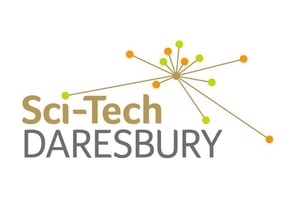

Sci-Tech Daresbury provides unique and world-leading facilities from particle accelerators to supercomputers. Everyone on the campus stands on the shoulders of pioneers who have pushed the boundaries of modern science for over 60 years at STFC’s Daresbury Laboratory, Home to three Nobel prizes.
Scientists and engineers from academia and industry continue to build on a long heritage of scientific breakthroughs that are changing the world. As well as working closely with researchers, STFC offers access to unique science facilities to support innovation at pace.


Backed by UK government funding and strategic partnerships with industry giants such as IBM, Atos and the University of Liverpool, The Hartree Centre helps UK businesses of any size to explore and adopt supercomputing, data analytics and artificial intelligence (AI) technologies for enhanced productivity and smarter innovation.
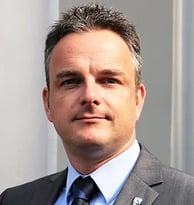

Professor Carsten P. Welsch from the University of Liverpool is a distinguished physicist with a rich background in accelerator physics and innovative imaging technologies. He is a leading expert in the development and optimization of advanced beam diagnostics systems and associated modelling techniques. His extensive research portfolio includes significant contributions to high-resolution imaging techniques and the application of novel detection methods.
His research covers the design and optimization of accelerators and light sources and underpinning technologies, in particular advanced beam diagnostics for accelerators and light sources, novel accelerators, as well as the application of accelerators with a focus on healthcare instrumentation and data science. His QUASAR Group has pioneered many innovative beam monitoring techniques - from gas jet-based non-invasive beam monitors, and high dynamic range halo monitors, all the way to cryogenic current comparators for the characterization of nA beams.
Professor Welsch brings a wealth of knowledge in both the theoretical and practical aspects of imaging technology. His expertise will be instrumental in guiding Panel’s research and development efforts, ensuring the implementation of state-of-the-art techniques and maintaining a competitive edge in the market. His ability to bridge the gap between academic research and commercial application will help us drive innovation and excellence in portable medical imaging solutions.
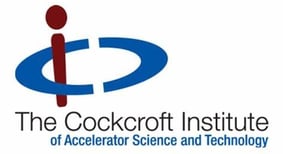

The Cockcroft Institute is a collaboration between STFC and the universities of Lancaster, Liverpool, Manchester and Strathclyde. Scientists at the Cockcroft Institute apply the world leading skills in the underpinning technologies of accelerator science to solve industry challenges.
The Institute builds on STFC's ASTeC centre of excellence for all aspects of the science and technology of charged particle accelerators, ranging from large scale international and national research facilities through to specialised industrial and medical applications.
Silveray is developing affordable large-area direct conversion detectors for the X-ray imaging market. Detectors are a major cost driver in imaging systems, so partnering low-cost DT with such detectors will allow a transformation in the price position at which point-of-care DT can be offered.
The first focus will be on Non Destructive Evaluation ('NDE') for composites and Metal Additive Manufacturing.
NEXTGEN PANEL LIMITED, registered in England under company number 15020127, trading as 'Panel'
Contact us
Panel is a Registered Trademark (UK00004140732) of NEXTGEN PANEL LIMITED
© 2024. All rights reserved.
welcome@xraypanel.com

